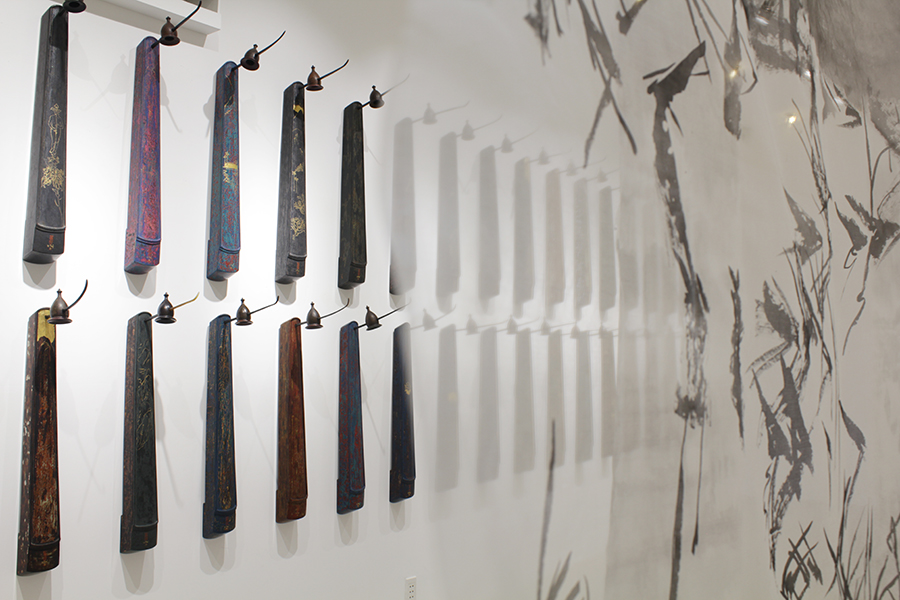The Silence is Deafening
Lê Thuý
13.11.2020 | 08.01.2021
“There’s really no such thing as the ‘voiceless’. There are only the deliberately silenced, or the preferably unheard.” - Arundhati Roy

In this solo exhibition, “The silence is deafening”, Le Thuy (b. 1988) invites us into an aspect of her artistic world that has not yet been seen in her previous works. Presented amidst the ongoing COVID-19 pandemic and worldwide social and political chaos, this new body of work makes a timely, yet subtle statement. In her older works, the search for beauty was a consolation, a contemplation. Now, in “The silence is deafening”, Thuy creates a space for reflection, mourning, and restoration.

The large-scale silk paintings as you enter, hint at spiritual spaces that are familiar to the Vietnamese collective memory, such as the delicate curtains that hang in front of places of worship, the altars, and sacred gods and goddesses. The peaceful landscapes in those silk paintings evoke a metaphoric nostalgia for the good old days, but also the suspension of uncertain realities and futures. Walking past these paintings, we face an installation of đàn bầu (gourd zither), a stringed instrument that is central to the folk music tradition in Vietnam. The sound of đàn bầu has a distinctive melancholic and sorrowful tonality and was commonly played by blind musicians in the past. The đàn bầu installed here are unique in that Le Thuy has transformed them into beautiful lacquer paintings, depicting her continual interest in the relations between humans and nature. However, Thuy’s deliberate choice of broken, soundless and song-less musical instruments have more nuanced meanings. The feelings evoked by the sound of music exist only as an idea in the viewers’ imagination. The audience can not hear the music but only recall in their minds the sound of music.

In her own words: “I wish to create a space of silence, where tragedies are happening. Illusions of mundane life, selfishness, indifference, and fear delivering us a world without any sound – A dead world.” As viewers walk through the installation, they will notice that the number of đàn bầu displayed: 39 pieces hanging on the wall hint at a tragic incident last year where 39 Vietnamese nationals were found dead in the trailer of a refrigerator lorry in Essex. Their deaths remain a burden on the souls of many, even for those who did not know them. When could human lives be reduced to a symbolic number? Why do some numbers still touch upon a specific meaning in the spiritual and cultural lives of the Vietnamese people? Perhaps the songs that these instruments can no longer sing are Le Thuy‘s silent homage to the lost souls, or it could be that this deafening silence mourns for the many songs that can no longer sing.
This exhibition marks an important milestone in Le Thuy’s career with new material experimentation, such as lacquer, and the intervention into space; but also showcases a new maturity and confidence.
